Uncategorized
Sicily’s Jews have their first rabbi in 500 years. Italy’s Jewish establishment won’t accept them.
CATANIA, Italy (JTA) — Rabbi Gilberto Ventura believes his synagogue has the most beautiful view in the world. Located in the tower of a century-old castle on the slopes of Mt. Etna in the eastern Sicilian city of Catania, the synagogue is wedged between a snow-capped volcano and the sun-kissed Mediterranean sea.
The 49-year-old Brazil-born rabbi also thinks his congregation is one of the most unique in the world. It’s made up mainly of Bnei Anusim — descendants of Jews forced to hide their religious practice and convert to Catholicism after the Spanish Inquisition of 1492. Before that infamous decree, Sicily was home to tens of thousands of Jews.
The synagogue, which was first inaugurated last fall, is the result of decades of grassroots efforts by those descendants in Catania to find each other and forge a sense of community that had been lacking for centuries.
Hiring a full-time rabbi was the last piece of the puzzle, and Ventura, who has a long history of working with communities of Bnei Anusim in Brazil, was a natural candidate. He arrived in Catania in January.
“I really believe that the future Judaism in the world, especially in some places like Italy and, of course, Brazil, is connected to the Bnei Anusim, and the need to embrace the Bnei Anusim,” Ventura said.
But in an ongoing point of frustration, the formal organization representing Italian Jewry, the Union of Italian Jewish Communities (UCEI), does not recognize them as Jews.
“In the case of Catania, this strange Jewish community hasn’t passed all the steps the law requires,” said Giulio Di Segni, the vice president of UCEI.
He was referring to the fact that the community did not seek UCEI’s permission before establishing themselves under the name “Jewish community of Catania.” Per Italian law, UCEI has a monopoly on acknowledging and establishing Jewish communal life in Italy — including authority over who can use the term “Jewish community of” in formal ways.
“UCEI can’t accept this because it is too easy,” he added. “We are not against their synagogue or their way of prayer, but they cannot use the name ‘Jewish community of Catania.’”
The rooftop of the Castello Leucatia, where the community meets, has a large menorah and a view of the Mediterranean. (David I. Klein)
Catania’s Jewish community members told the Jewish Telegraphic Agency a variety of stories about their Jewish backgrounds. Some came from families that always outwardly identified as Jewish. Others identified the source of family traditions practiced by parents and grandparents who — as descendants of Jews who faced persecution for practicing Judaism — still felt the need to hide aspects of their Jewishness from the public eye.
In the midst of questions about their ancestry, the majority of the Jewish community members have undergone Orthodox conversions. But that hasn’t led to their acceptance.
Benito Triolo, president of the Catania Jewish community, told the Jewish Telegraphic Agency that he first came to Judaism at the age of 40, thanks to the insight of a Jewish friend in Palermo, Sicily’s capital and most populous city. Working together, they established a Charter of Sicilian Jewry, which aimed to identify and highlight the Jewish heritage of neighborhoods across the island.
While working on that project, Triolo came closer to his own Jewish heritage, and after years of study, he completed an Orthodox conversion through a rabbi in Miami 25 years ago.
Another community member, who was born Alessandro Scuderi but today goes by the name of Yoram Nathan, first felt drawn to Judaism as a child watching news of the Six-Day War in 1967. At first, he was laughed at by other members of his family — except his grandmother, who happened to have a tradition of lighting eight candles in early winter and baking flat unleavened bread around Easter time.
Decades of study later, Scuderi also completed a formal conversion to Judaism before an Orthodox rabbinic court, or beit din.
Others had more straightforward backgrounds.
“I was born in a Jewish family,” said David Scibilia, the community’s secretary. “Frankly speaking, we were not hiding or deep in the shadows in this part of the country.”
Scibilia said that his father explained to him that he was a Jew as early as the age of four. Within their own home, they observed holidays and kept Shabbat — no easy task since Italian schools at the time of his childhood in the 1970s had class on Saturdays. He did not eat meat until he was an adult and was able to acquire kosher meat.
He said that his family had maintained their Jewish identity since the days of the Inquisition and married amongst a small group of other similar families.
“I was a Jew, but not part of any community,” Scibilia said. “Just my family was my community.”
An aerial view of the city of Catania shows the Mt. Etna volcano in the background, Jan. 28, 28, 2022. (Fabrizio Villa/Getty Images)
Scibilia explained that once he had a child of his own, he realized he did not want her to have the same lonely Jewish experience. But when he reached out to UCEI, he said he found the proverbial door to organized Jewish life shut. Earning membership in Jewish community organizations across Western Europe involves a strict vetting process, and many groups require applicants to prove their mothers’ Jewishness according to varying standards.
Scibilia’s experience was echoed by Jews outside of the community in Catania and across Italy’s south who talked to JTA — a feeling of neglect or rejection by UCEI for those who fall outside of the norms of Italian Judaism.
UCEI currently recognizes 19 Jewish communities across northern Italy and just one in the south, in Naples, which has jurisdiction over the rest of the southern half of the peninsula and the island of Sicily. The organization recognizes around 28,000 Jews in total across the country.
Scibilia noted that despite his Jewish upbringing, he has multiple certificates of conversion from Orthodox rabbis. The first came from a beit din of American rabbis from who traveled to Syracuse, Sicily, to assess Scibilia and others like him in Sicily. His second comes from the conversion court of the Israeli Chief Rabbinate, which is known for its exacting Orthodox standards.
Both were rejected by Italy’s own Orthodox rabbinate, and he was forced to stand before another rabbinic court in Italy.
“I have at this moment — don’t start to laugh — three documents that prove that I am a Jew, two Ketubah [marriage contracts] for my wedding, and so on, again and again and again,” Scibilia said.
Others’ experiences in the region have been even more fraught, he said.
“The problem in Italy, that if you try to study with any rabbi here, you can study for 20 years, maybe you can die even before you reach the end of the tunnel,” he said. “From my point of view, they are playing with the spirituality of these people.”
In a statement last year, UCEI called the the Catanians “a phantom ‘Jewish community’” and accused them of “misleading the local institutions and deluding believers and sympathizers into adhering to traditional religious rites, never actually recognized or authorized by the Italian rabbinical authority.”
“Between UCEI and the Italian republic is an agreement signed in ‘87,” Di Segni said. “This law means everything about Jewish communities in Italy is through the Union Jewish community in Italy (UCEI).”
Noemi Di Segni, shown in Rome in 2017, is president of the Union of Jewish Communities in Italy. (Stefano Montesi/Corbis via Getty Images)
Triolo said he isn’t too concerned about UCEI’s recognition.
“Ours is a process of refounding old communities that existed as early as 200 and up to 1492,” Triolo said. “Our recognition is already in our history. At that time the UCEI did not exist. We were there and we simply returned!”
No one knows when Jews first arrived in Sicily, but the Talmud tells a story that claims Rabbi Akiva, a well-known early rabbinic sage, visited the island in the early second century and told of a small Jewish community in Syracuse. Some historians believe the Roman writer Caecilius Calactinus — who was born in a town near Messina in the first century B.C.E — to have been of Jewish origin.
All agree that over the course of history, Sicily’s Jews watched as the island was traded between Greeks, Carthaginians, Romans, Arabs, Normans and half a dozen other empires. The narrative has also long been that Jewish life there ended five centuries ago, under Spanish rule.
The Spanish empire’s Jews suffered the same fate as Jews from the Iberian peninsula, who would become known to the world as Sephardim when they were expelled in 1492.
The descendents of Spain — and Sicily — spread throughout the world, establishing communities in North Africa, throughout the Ottoman empire, in the Netherlands and ultimately the British Isles and North America, as it was believed that Judaism faded away in their homelands.
Catania’s Jews disagree, arguing that many Jews practiced their religion over the centuries, in secret.
Triolo and others in the community formally inaugurated their synagogue in October. It was furnished with Torah scrolls donated by the Ohev Sholom synagogue in Washington, D.C.
The synagogue is situated in the tower of the Castello Luecatia, an early 20th-century structure built by a merchant believed to be of Jewish origin. The building was granted to the community by the city’s municipality.
“So they had the people, they had a synagogue, but they needed somebody to teach,” Ventura said.
The community meets in the Castello Luecatia, an early 20th-century structure built by a merchant believed to be of Jewish origin. (David I. Klein)
Ventura, who is Orthodox, may be the island’s first permanent working rabbi in over 500 years, but it’s not his first time working with Bnei Anusim.
Back in his native Brazil, Ventura was the leader of the Synagogue Without Borders, an organization through which he served 15 communities in Brazil’s north that were made up of descendants of Jews who came with the first Portuguese colonists to South America and who ultimately had to hide their identity as the Inquisition spread to the New World.
His work there put him in conflict with Brazil’s Jewish establishment, too. But Ventura is unfazed.
In Brazil, he founded synagogues and summer camps and built mikvahs and yeshivas across the country’s north. Since 2015, he has facilitated the conversion of hundreds of Bnei Anusim, bringing them back into the fold of mainstream Orthodox Judaism.
“I am a teacher since I was 21 years old,” he said. “Now I am 49, along with my wife. It’s one of the things we love to do, and know how to do. To teach Jewish philosophy, to teach Torah, to teach Tanakh, to teach the story of the Jews in Brazil, and now we are starting to teach the story of the Jews in Italy, the story of the Inquisition etcetera.”
In Castello Leucatia, he leads Shabbat services with the energy of a gospel preacher, pausing between prayers to explain a verse, teach a new tune, welcome latecomers, or simply to allow the congregation to talk.
Catania community members are shown at a recent gathering. (David I. Klein)
“This is what’s most important,” he remarked during one such lull on a recent Friday night. “That they get to talk and be a community.”
Ventura had organized a Shabbat event for other Jews across Italy — from Naples to Turin — who shared his belief that the future of Judaism was in communities like the one in Catania.
“Our point of view of Judaism is that we have to be a part of society, we don’t have to insulate ourselves, we believe that Judaism has a lot to contribute to society,” Ventura said. “In Brazil, we have a lot of connections with people from the periphery, in the favela and other communities, immigrants, Indians, etcetera. So that is something we want to establish here, to teach the people a Judaism that brings good things to the wider society.”
Ventura isn’t the only one working with such communities in southern Italy. Across the Strait of Messina, Jewish life has also been on the rise in Calabria — the toe of Italy’s boot — thanks to an American-born rabbi named Barbara Aiello.
Aiello, though raised in Pittsburgh, is of Calabrian descent. She returned to the land of her ancestors in the early 2000s and began working with the Bnei Anusim there, ultimately establishing a synagogue called Ner Tamid del Sud, meaning “eternal light of the south.”
“Until now, nobody took care of Judaism in the south of Italy,” Scibilia said while looking out at the Mediterranean from the terrace of Castello Leucatia.
—
The post Sicily’s Jews have their first rabbi in 500 years. Italy’s Jewish establishment won’t accept them. appeared first on Jewish Telegraphic Agency.
Uncategorized
How the Global Religious Landscape Changed from 2010 to 2020
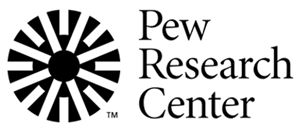
Muslims grew fastest; Christians lagged behind global population increase
• Christians are the world’s largest religious group, at 28.8% of the global population. They are a majority everywhere except the Asia-Pacific and Middle East-North Africa regions. Sub-Saharan Africa has surpassed Europe in having the largest number of Christians. But Christians are shrinking as a share of the global population, as millions of Christians “switch” out of religion to become religiously unaffiliated.
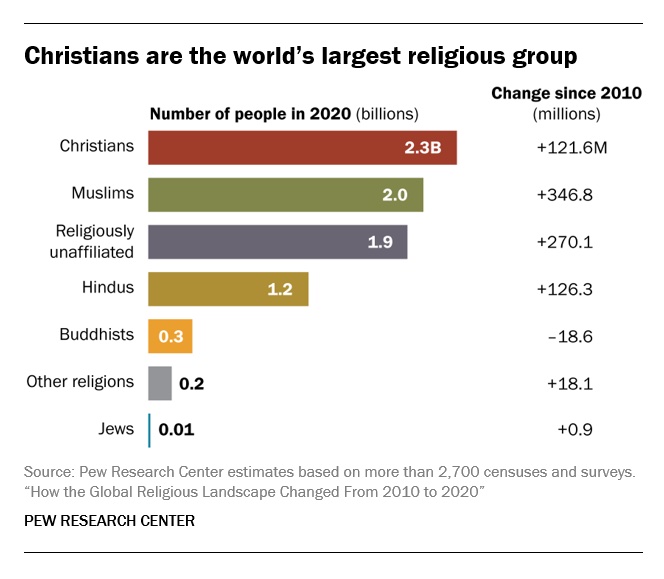
• Muslims are the world’s second-largest religious group (25.6% of the world’s population) and the fastest-growing major religion, largely due to Muslims’ relatively young age structure and high fertility rate. They make up the vast majority of the population in the Middle East-North Africa region. In all other regions, Muslims are a religious minority, including in the Asia-Pacific region (which is home to the greatest number of Muslims).
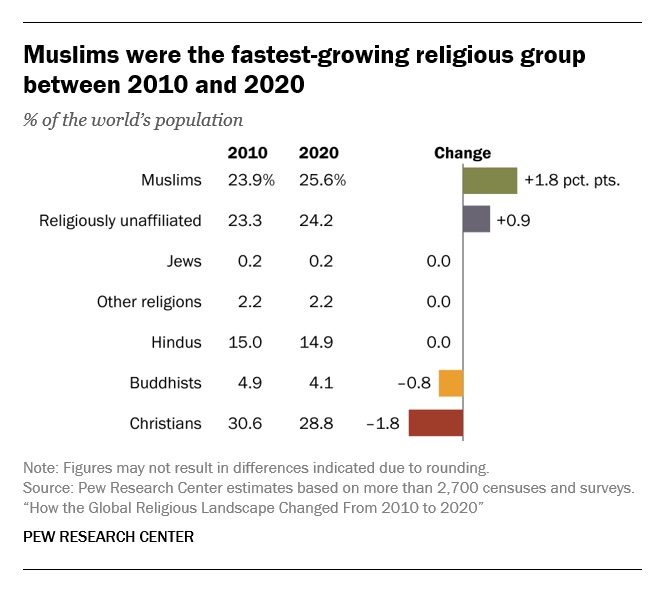
• The religiously unaffiliated population is the world’s third-largest religious category (24.2% of the global population), after Christians and Muslims. Between 2010 and 2020, religiously unaffiliated people grew more than any group except Muslims, despite their demographic disadvantages of an older age structure and relatively low fertility. The unaffiliated made up a majority of the population in 10 countries and territories in 2020, up from seven a decade earlier.
• Hindus are the fourth-largest religious category (14.9% of the world’s population), after Christians, Muslims and religiously unaffiliated people. Most (99%) live in the Asia-Pacific region; 95% of all Hindus live in India alone. Between 2010 and 2020, Hindus remained a stable share of the world’s population because their fertility resembles the global average, and surveys indicate that switching out of or into Hinduism is rare.
• Buddhists (4.1% of the world’s population) are the only group in this report whose number declined worldwide between 2010 and 2020. This was due both to religious disaffiliation among Buddhists in East Asia and to a relatively low birth rate among Buddhists, who tend to live in countries with older populations. Most of the world’s Buddhists (98%) reside in the Asia-Pacific region, the birthplace of Buddhism.
• Jews, the smallest religious group analyzed separately in this report (0.2% of the world’s population), lagged behind global population growth between 2010 and 2020 – despite having fertility rates on par with the global average – due to their older age structure. Most Jews live either in North America (primarily in the United States) or in the Middle East-North Africa region (almost exclusively in Israel).
These are among the key findings of a Pew Research Center analysis of more than 2,700 censuses and surveys, including census data releases that were delayed due to the coronavirus pandemic. This report is part of the Pew-Templeton Global Religious Futures project, which analyzes global religious change and its impact on societies around the world. Funding for the Global Religious Futures project comes from The Pew Charitable Trusts and the John Templeton Foundation.
Uncategorized
Antisemitism in some unlikely places in America

By HENRY SREBRNIK Antisemitism flourishes in a place where few might expect to confront it – medical schools and among doctors. It affects Jews, I think, more emotionally than Judeophobia in other fields.
Medicine has long been a Jewish profession with a history going back centuries. We all know the jokes about “my son – now also my daughter – the doctor.” Physicians take the Hippocratic Oath to heal the sick, regardless of their ethnicity or religion. When we are ill doctors often become the people who save us from debilitating illness and even death. So this is all the more shocking.
Yes, in earlier periods there were medical schools with quotas and hospitals who refused or limited the number of Jews they allowed to be affiliated with them. It’s why we built Jewish hospitals and practices. And of course, we all shudder at the history of Nazi doctors and euthanasia in Germany and in the concentration camps of Europe. But all this – so we thought – was a thing of a dark past. Yet now it has made a comeback, along with many other horrors we assume might never reappear.
Since the Hamas attack on Israel on October 7, 2023, there has been a resurgence of antisemitism, also noticeable in the world of healthcare. This is not just a Canadian issue. Two articles on the Jewish website Tablet, published Nov. 21, 2023, and May 18, 2025, spoke to this problem in American medicine as well, referencing a study by Ian Kingsbury and Jay P. Greene of Do No Harm, a health care advocacy group, based on data amassed by the organization Stop Antisemitism. They identified a wave of open Jew-hatred by medical professionals, medical schools, and professional associations, often driven by foreign-trained doctors importing the Jew-hatred of their native countries, suggesting “that a field entrusted with healing is becoming a licensed purveyor of hatred.”
Activists from Doctors Against Genocide, American Palestinian Women’s Association, and CODEPINK held a demonstration calling for an immediate cease-fire in Gaza at the Hart Senate Office Building in Washington, D.C., Nov. 16, 2023, almost as soon as the war began. A doctor in Tampa took to social media to post a Palestinian flag with the caption “about time!!!” The medical director of a cancer centre in Dearborn, Michigan, posted on social media: “What a beautiful morning. What a beautiful day.” Even in New York, a physician commented on Instagram that “Zionist settlers” got “a taste of their own medicine.” A Boston-based dentist was filmed ripping down posters of Israeli victims and a professor at the University of Pennsylvania Perelman School of Medicine did the same. Almost three-quarters of American medical associations felt the need to speak out on the war in Ukraine but almost three-quarters had nothing to say about the war in Israel.
Antisemitism in academic medical centres is fostering noxious environments which deprive Jewish healthcare professionals of their civil right to work in spaces free from discrimination and hate, according to a study by the Data & Analytics Department of StandWithUs, an international, non-partisan education organization that supports Israel and fights antisemitism.
“Academia today is increasingly cultivating an environment which is hostile to Jews, as well as members of other religious and ethnic groups,” StandWithUs director of data and analytics, and study co-author, Alexandra Fishman, said on May 5 in a press release. “Academic institutions should be upholding the integrity of scholarship, prioritizing civil discourse, rather than allowing bias or personal agendas to guide academic culture.”
The study, “Antisemitism in American Healthcare: The Role of Workplace Environment,” included survey data showing that 62.8 per cent of Jewish healthcare professionals employed by campus-based medical centres reported experiencing antisemitism, a far higher rate than those working in private practice and community hospitals. Fueling the rise in hate, it added, were repeated failures of DEI (diversity, equity, and inclusion) initiatives to educate workers about antisemitism, increasing, the report said, the likelihood of antisemitic activity.
“When administrators and colleagues understand what antisemitism looks like, it clearly correlates with less antisemitism in the workplace,” co-author and Yeshiva University professor Dr. Charles Auerbach reported. “Recognition is a powerful tool — institutions that foster awareness create safer, more inclusive environments for everyone.”
Last December, the Data & Analytics Department also published a study which found that nearly 40 per cent of Jewish American health-care professionals have encountered antisemitism in the workplace, either as witnesses or victims. The study included a survey of 645 Jewish health workers, a substantial number of whom said they were subject to “social and professional isolation.” The problem left more than one quarter of the survey cohort, 26.4 per cent, “feeling unsafe or threatened.”
The official journal of the Alliance for Academic Internal Medicine concurs. According to “The Moral Imperative of Countering Antisemitism in US Medicine – A Way Forward,” by Hedy S. Wald and Steven Roth, published in the October 2024 issue of the American Journal of Medicine, increased antisemitism in the United States has created a hostile learning and practice environment in medical settings. This includes instances of antisemitic behaviour and the use of antisemitic symbols at medical school commencements.
Examples of its impact upon medicine include medical students’ social media postings claiming that Jews wield disproportionate power, antisemitic slogans at the University of California, Los Angeles (UCLA) David Geffen School of Medicine, antisemitic graffiti at the University of California, San Francisco (UCSF) Cancer Centre, Jewish medical students’ exposure to demonization of Israel diatribes and rationalizing terrorism; and faculty, including a professor of medicine at UCSF, posting antisemitic tropes and derogatory comments about Jewish health care professionals. Jewish medical students’ fears of retribution, should they speak out, have been reported. “Our recent unpublished survey of Jewish physicians and trainees demonstrated a twofold increase from 40% to 88% for those who experienced antisemitism prior to vs after October 7,” they stated.
In some schools, Jewish faculty are speaking out. In February, the Jewish Faculty Resilience Group at UCLA accused the institution in an open letter of “ignoring” antisemitism at the School of Medicine, charging that its indifference to the matter “continues to encourage more antisemitism.” It added that discrimination at the medical school has caused demonstrable harm to Jewish students and faculty. Student clubs, it said, are denied recognition for arbitrary reasons; Jewish faculty whose ethnic backgrounds were previously unknown are purged from the payrolls upon being identified as Jews; and anyone who refuses to participate in anti-Zionist events is “intimidated” and pressured.
Given these findings, many American physicians are worried not only as Jewish doctors and professionals, but for Jewish patients who are more than ever concerned with whom they’re meeting. Can we really conceive of a future where you’re not sure if “the doctor will hate you now?”
Henry Srebrnik is a professor of political science at the University of Prince Edward Island.
Uncategorized
The 2025 Toronto Walk (and talk ) for Israel

By GERRY POSNER There are walks and then there are walks. The Toronto UJA Walk for Israel on May 25, 2025 was one of a kind, at least as far as Canada and Jews are concerned. The number of people present was estimated to be 56,000 people or 112,000 total shoes. (How they get to that number is bewildering to me, since there is no one counting). This was 6,000 more than last year. Whether it is true or not, take it from me, it was packed. The synagogues in Canada should be so fortunate to get those numbers in total on High Holidays. The picture here gives you a sense of the size of the crowd.
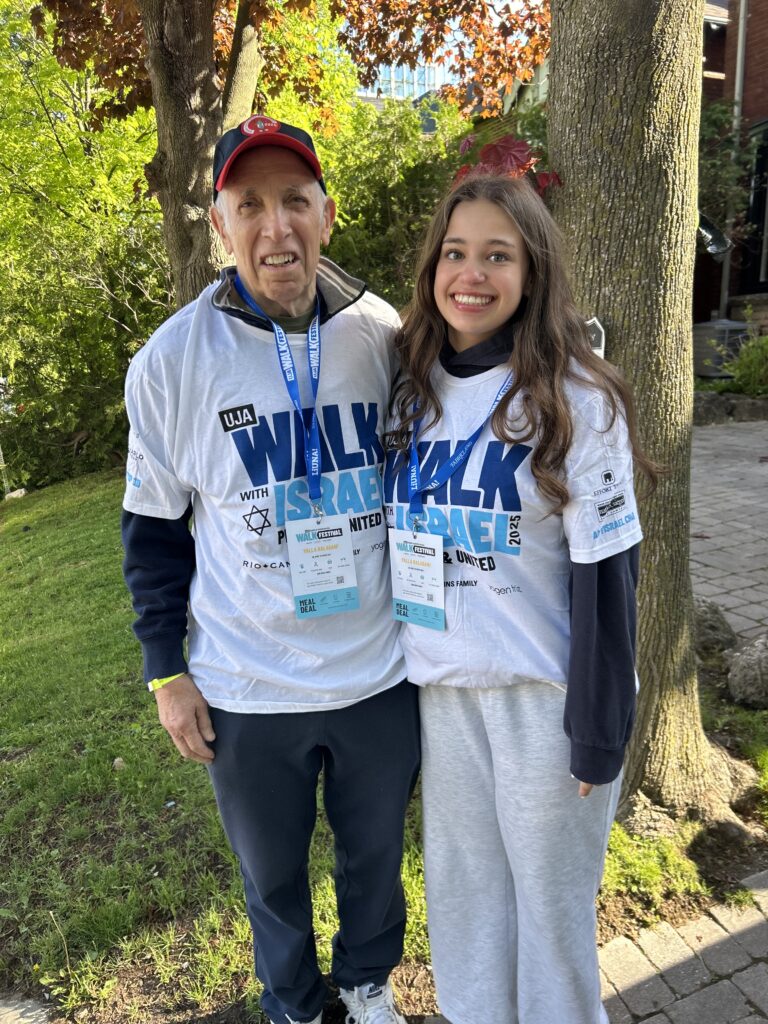
This was my first walk in Toronto for Israel and I was with my granddaughter, Samantha Pyzer (not to forget her two friends whom she managed to meet at the site, no small feat, even with iPhones as aids). The official proceedings began at 9:00 a.m. and the walk at 10:00 a.m. There was entertainment to begin with, also along the way, and at the finish as well. The finish line this year was the Prosserman Centre or the JCC as it often called. The walk itself was perhaps 4 kilometres – not very long, but the walking was slow, especially at the beginning. There were lots of strollers, even baby carriages, though I did not see any wheelchairs. All ages participated on this walk. I figured, based on what I could see on the faces of people all around me that, although I was not the oldest one on the walk, I bet I made the top 100 – more likely the top 20.
What was a highlight for me was the number of Winnipeggers I met, both past and present. Connecting with them seemed to be much like a fluke. No doubt, I missed la lot of them, but I saw, in no particular order (I could not recall the order if my life depended on it): Alta Sigesmund, (who was, a long time ago, my daughter Amira’s teacher), Marni Samphir, Karla Berbrayer and her husband Dr. Allan Kraut and family. Then, when Samantha and I made it to the end and sat down to eat, I struck up a conversation with a woman unknown to me and as we chatted, she confirmed her former Winnipeg status as a sister-in- law to David Devere, as in Betty Shwemer, the sister of Cecile Devere. I also chanced upon Terri Cherniack, only because I paused for a moment and she spotted me. As we closed in near the finish, I met ( hey were on their way back), Earl and Suzanne Golden and son Matthew, as well as Daniel Glazerman. That stop caused me to lose my granddaughter and her pals. Try finding them amid the noise and size of the crowd – but I pulled it off.
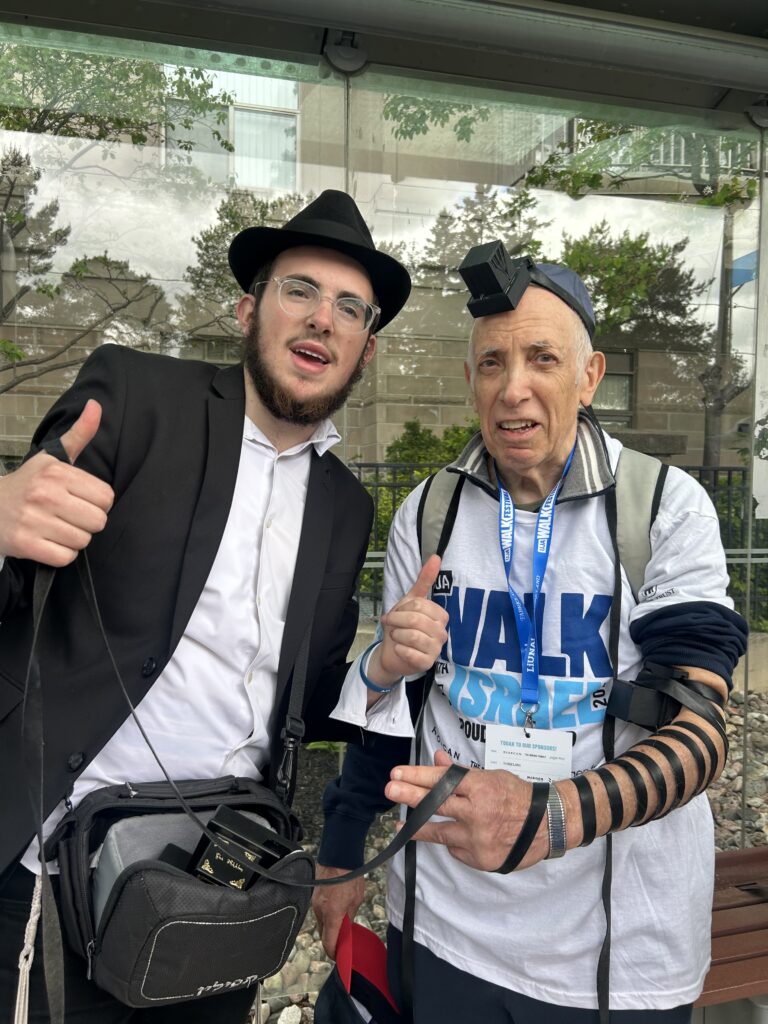
As I was in line to get food, I started chatting with a guy in the vicinity of my age. I dropped the Winnipeg link and the floodgates opened with “ Did I know Jack and Joanie Rusen?” So that was an interesting few minutes. And I was not too terribly surprised to come across some of my Pickleball family. All of these meetings, along with spotting some of my sister’s family and other cousins, were carried on with the sound of the shofar as we moved along the way. In short, this was a happening. Merchants selling a variety of products, many of them Israeli based, were in evidence and, of course, the day could not have ended without the laying of tefillin, aided by Chabad, who have perfected the procedure to take less than a minute. See the photo. Chabad had a willing audience.
Aside from the joy of sharing this experience with my granddaughter, the very presence of all these Jews gathered together for a common reason made this day very special to me. However, there was a downside to the day. The downside was that, as we began to walk back to our car there was no other way I could figure out how to return when the rains came and came. While we walked faster, we were impeded by pouring rain and puddles. But Samantha wanted to persevere, as did I. We made it, but were drenched. My runners are still drying out as I write this two days later.
What with being surrounded by 56,000 people, the noise, the slow walking, and the rain, I can still say the day was a real highlight for me – one of the better moments since our arrival in Toronto in 2012. As well as the photos we took along the way, I have the reminder of the day, courtesy of the UJA, as evidenced from the photo. It was not just the walk, but the talk that accompanied the walk that made it so worthwhile for me. I would do it again, minus the rain.
